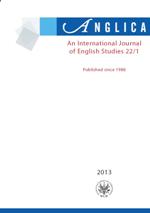The path to Mary’s acquittal: legal solutions in the N-Town Cycle’s ‘‘Trial of Mary and Joseph”
The path to Mary’s acquittal: legal solutions in the N-Town Cycle’s ‘‘Trial of Mary and Joseph”
Author(s): Tomasz WiącekSubject(s): Literary Texts
Published by: Wydawnictwa Uniwersytetu Warszawskiego
Keywords: N-Town cycle; drama; Mary’s miracle; medieval legal system
Summary/Abstract: In the ‘‘Trial of Mary and Joseph”, a play from the late fifteenth-century N-Town cycle, Mary and Joseph are tried for adultery and breaking a public oath. The trial is the result of an indictment brought about by the public rumour concerning the origins of Mary’s pregnancy and possibility that Joseph is not the father of the child. The setting of a contemporary fifteenth-century ecclesiastical court introduces a legal and procedural approach which cannot properly process such an extraordinary event as the miraculous origins of Mary’s pregnancy. As a result, Mary cannot be acquitted in accordance to the fifteenth-century regulations and a legal modification in the procedure must be implemented. However, a direct change would have a negative effect on the credibility of the play and the legal system it represents. Therefore, a subtle alteration is introduced: a transition from a strictly rational and commonsensical ecclesiastical ex officio trial to the common law trial by jury as outlined in the Assize of Clarendon, which legally utilized ordeal as a form of purgation. As a result, Mary could be legally acquitted, and the system’s credibility would not have suffered from an intentional and highly irregular alteration, while the audience of the play would have been assured that a medieval legal system could deal with cases even as extraordinary as a miraculous virgin birth. The argument will unfold through a detailed comparative study of both procedures, their similarities and disparities, presented in the context of the social and legal perceptions of a contemporary audience.
Journal: ANGLICA - An International Journal of English Studies
- Issue Year: 22/2013
- Issue No: 1
- Page Range: 83-96
- Page Count: 14
- Language: English

